This article was co-authored by Andrea Rudominer, MD, MPH. Dr. Andrea Rudominer is a board certified Pediatrician and Integrative Medicine Doctor based in the San Francisco Bay Area. Dr. Rudominer has over 15 years of medical care experience and specializes in preventive health care, obesity, adolescent care, ADHD, and culturally competent care. Dr. Rudominer received her MD from the University of California, Davis, and completed a residency at the Lucile Packard Children's Hospital at Stanford University. Dr. Rudominer also has an MPH in Maternal Child Health from the University of California, Berkeley. She is a Member of the American Board of Pediatrics, a Fellow of the American Academy of Pediatrics, a Member and Delegate of the California Medical Association, and a Member of the Santa Clara County Medical Association.
There are 7 references cited in this article, which can be found at the bottom of the page.
This article has been viewed 340,400 times.
That sharp pain below your ribcage is likely caused by a strained ligament — but if the pain is intense, visit a doctor to check for more serious issues.[1]
Steps
Using Massage, Breathing, and Stretching
-
1Slow down if you are running and get a side cramp. Most side cramps are related to strenuous exercise, like running. Reduce your pace once you feel the cramps. This will give the cramps time to subside on their own. If they don’t subside, slowing down allows you to try different methods to relieve the pain.
-
2Apply a light massage to the cramping area. One of the quickest ways to get rid of side cramps is to massage the area with light pressure.
- Place your hand on the area that hurts, usually just under your rib cage on one side.
- Inhale and then as you exhale, use your fingers and thumb to lightly pinch or squeeze this area. Apply pressure upward and inward, toward the center of your body.
- Relax your hand as you inhale and then apply light pressure with your fingers again as you exhale. Continue this light massage for five to six breaths.
Advertisement -
3Take bigger, longer inhales and bigger, longer exhales as you run or workout. Inhaling and exhaling with bigger breaths will allow your diaphragm to relax and relieve pressure on your liver and intestines.[2]
- Focus on bringing your breathing into your belly, as opposed to in your lungs. This will help to oxygenate your blood and relieve pressure on your organs.
- You should also avoid shallow breathing when you working out. Shallow breathing keeps your diaphragm raised and can create more pressure on your ligaments.[3]
-
4Try to synchronize your breathing pattern with your running. One theory on the cause of side cramps is the rhythm of your breathing as you run affects the level of pressure on the ligaments that connect your diaphragm to your liver. Synchronizing your breath with your movements should help to relieve any pressure on your diaphragm.[4]
- Determine which side of your body aches. For example, maybe you are experiencing cramps on your left side.
- Exhale when the foot on the side that doesn’t ache hits the ground. In this example, you would exhale when your right foot hits the ground.
- Inhale when the foot on the side that does ache hits the ground. In this example, you would inhale when your right foot hits the ground.
- Maintain this breathing pattern (exhale for the side that doesn’t ache, inhale for the side that does ache) until the side stitch subsides.
-
5Stretch the side of your body that is cramping. Stretching is important in relieving cramps. To do this, stop running or exercising. Then, raise your arm on the side that is cramping straight up in the air. Lean to the opposite side to stretch the cramped side. Hold the stretch for 2-5 seconds. Relax and repeat the stretch 3-5 times.[5]
-
6Touch your toes. Stop running or exercising and try to touch your toes. This will help to alleviate pressure on your abdominal area, especially if there is trapped gas in your intestine that may be causing the cramps.[6]
-
7Bend 45 to 90 degrees at your waist as you run. This will help to lessen the pressure on your liver and reduce the cramps. Run at distance of about 15 meters (49 ft) with your body bent at the waist and then slowly straighten up to keep running.[7]
Adjusting Your Eating Habits
-
1Eat a balanced diet rich in potassium and magnesium. While it's always important to eat a varied and healthy diet, these nutrients in particular are essential to your body, and they may play a role in preventing cramps. Bananas, cantaloupes, cooked spinach, potatoes, and mushrooms are all good sources of potassium, while peas, flaxseed, cooked beans, and almonds are rich in magnesium.[8]
-
2Avoid eating a meal one to two hours before running or working out. Follow the one hour rule and wait at least one hour before doing strenuous exercise. This will give your body time to digest.[11]
-
3Don't eat wheat-based foods, like bread or muesli, before you exercise. If you do feel you need to eat or are worried about having less energy during your workout, eat complex carbohydrates like a handful of dried berries or nuts like almonds half an hour before a run or workout.[12]
- Complex carbohydrates are good snacks before a run or workout because they are digested in your small intestine and have a faster gastric emptying rate, which means they leave your stomach faster. You then won’t be running or working out on a full stomach.[13]
-
4Stay hydrated throughout the day and during all physical activity. Being dehydrated can increase your risk of getting cramps. Rather than drink a lot of water right before a run or workout, focus on drinking at least 6-8 glasses of water throughout the day. This will ensure you stay hydrated, even through strenuous exercise.[14]
Seeking Medical Attention
-
1Get medical attention if you experience severe abdominal cramps on your right side, nausea, and vomiting. In some cases, side cramps that are severe, especially on your right side, and occur along with other symptoms can be a sign of a more serious medical condition, including:
- Appendicitis: Your appendix is located on the right side of your lower abdominal. If your appendix starts to swell as the result of an infection, this can lead to some intense pain on your right side and possibly a fever. Your appendix will need to be examined as soon as possible to prevent a rupture. Treatment includes surgical removal of the appendix and if severe, possible treatment with antibiotics.
- Ovarian cysts: If you are a woman, severe pain on your right side could also be due to ovarian cysts. These cysts form in your ovary and can cause ovarian cancer. The cysts can be removed through a surgical procedure called a laparoscopy.
- A doctor would order blood work and possibly an abdominal CT to diagnose you. Other medical conditions that cause similar pain include testicular torsion, ectopic pregnancy, intussusception, intestinal malrotation, and bowel obstruction. Other causes for women include pelvic inflammatory disease (PID), pelvic cysts, or masses.
-
2Seek medical care if you have severe pain in your right upper abdominal area as well as your right back, shoulder, or chest area. These could all be symptoms of gallstones. Gallstones are stones that form in your gall bladder and can be very painful. But they can be removed through a surgical procedure called a cholecystectomy.
- Biliary disease is a condition of the right upper quadrant (RUQ). This usually represents itself as right upper quadrant pain due to stretching of the capsule of the liver with inflammation. There can be stones or infection of the biliary tree that leads to this diagnosis. Usually blood work and abdominal ultrasound are used to diagnose this condition. Fever may also be associated. Surgery is the treatment option for this disease as well.
-
3Get medical attention if you have severe lower abdominal pain, cloudy or bloody urine, and a burning sensation when you pee. These could be symptoms of a urinary tract infection (UTI), which occur when bacteria enters your urethra and your bladder.[15]
- UTIs are more common in women. Women tend to get a UTI after sexual activity or when using a diaphragm for birth control.[16]
-
4Go see a doctor if you have pain on your left or right side and you are pregnant. If the pain persists, this could be associated with an ectopic pregnancy. An ectopic pregnancy occurs when the fertilized egg implants itself outside the uterus, often in the fallopian tubes.
- If an ectopic pregnancy occurs, you will feel pain based on which side the egg has implanted itself. The only treatment for an ectopic pregnancy is to terminate the pregnancy.
-
5Talk to your doctor if you experience severe abdominal pain, a gurgling stomach, and nausea or vomiting. These could be symptoms of an ulcerative colitis or a stomach ulcer. Your doctor can prescribe medication to relieve these symptoms.
- Stomach ulcer result from an overuse of NSAIDS and can be very painful. Other causes of stomach ulcers are H. Pylori bacteria.
- Gastroesophageal reflux disease may be causing your abdominal pain. Treatment with antacids may be necessary.
- Ulcerative colitis is unusual for this type of pain, but it does lead to belly pain with diarrhea and inflammation of the bowel.
Preventing Side Cramps
-
1Warm up before you exercise. You should warm up your body no matter what type of exercise you are planning to do, but warm ups are essential if you plan to do a long run or to run at a fast pace. Loosen up your muscles before you attempt an intense run or workout to prevent cramping.[17]
-
2Do plank to strengthen your core. Strengthening your core will help your ligaments get used to pressure and tension. Plank is a simple but effective exercise to strengthen your abdominals.
- Place your hands in line with your shoulders on an exercise mat. Stretch your legs out, hip width apart, so you are in a push up position.
- Put weight into your legs and the palms of your hands. Squeeze your abdominal area.
- Hold plank for 10 to 15 breaths. Repeat the exercise several times.
-
3Do a dumbbell exercise to strengthen your diaphragm. Buffing up your diaphragm should help to lessen your chances of getting side cramps when you run or exercise.[18]
- Lie on your back on a weight bench. Keep your lower back flat against the bench.
- Slowly raise a dumbbell (go for a low amount of weight) with your arms extended up and over your head. When you feel your lower back begin to rise off the bench, stop moving the dumbbell.
- Keep your lower back on the bench and take 5-10 breaths. Then, bring the dumbbell back to the start position. Repeat this exercise several times.
-
4Focus on your breathing as you run or workout. Deeper, fuller inhales and exhales will help to reduce pressure on your diaphragm and will keep you energized as you exercise.
-
5Be assured that with consistent exercise, side cramps should go away. Recent studies have shown that the more you run, the more infrequent side cramps become.[19] In fact, as your fitness improves, the likelihood of cramps and pain will decrease. So commit to a running or workout routine and breath through your cramps, as long as they are not too severe.[20]
Expert Q&A
Did you know you can get expert answers for this article?
Unlock expert answers by supporting wikiHow
-
QuestionShould I apply heat or cold to cramps?
 Chris M. Matsko, MDDr. Chris M. Matsko is a retired physician based in Pittsburgh, Pennsylvania. With over 25 years of medical research experience, Dr. Matsko was awarded the Pittsburgh Cornell University Leadership Award for Excellence. He holds a BS in Nutritional Science from Cornell University and an MD from the Temple University School of Medicine in 2007. Dr. Matsko earned a Research Writing Certification from the American Medical Writers Association (AMWA) in 2016 and a Medical Writing & Editing Certification from the University of Chicago in 2017.
Chris M. Matsko, MDDr. Chris M. Matsko is a retired physician based in Pittsburgh, Pennsylvania. With over 25 years of medical research experience, Dr. Matsko was awarded the Pittsburgh Cornell University Leadership Award for Excellence. He holds a BS in Nutritional Science from Cornell University and an MD from the Temple University School of Medicine in 2007. Dr. Matsko earned a Research Writing Certification from the American Medical Writers Association (AMWA) in 2016 and a Medical Writing & Editing Certification from the University of Chicago in 2017.
Family Medicine Physician
-
QuestionWhat if I have cramps in my side but I haven't been exercising.
 Chris M. Matsko, MDDr. Chris M. Matsko is a retired physician based in Pittsburgh, Pennsylvania. With over 25 years of medical research experience, Dr. Matsko was awarded the Pittsburgh Cornell University Leadership Award for Excellence. He holds a BS in Nutritional Science from Cornell University and an MD from the Temple University School of Medicine in 2007. Dr. Matsko earned a Research Writing Certification from the American Medical Writers Association (AMWA) in 2016 and a Medical Writing & Editing Certification from the University of Chicago in 2017.
Chris M. Matsko, MDDr. Chris M. Matsko is a retired physician based in Pittsburgh, Pennsylvania. With over 25 years of medical research experience, Dr. Matsko was awarded the Pittsburgh Cornell University Leadership Award for Excellence. He holds a BS in Nutritional Science from Cornell University and an MD from the Temple University School of Medicine in 2007. Dr. Matsko earned a Research Writing Certification from the American Medical Writers Association (AMWA) in 2016 and a Medical Writing & Editing Certification from the University of Chicago in 2017.
Family Medicine Physician
-
QuestionAre there any supplements that can help with cramping?
 Andrea Rudominer, MD, MPHDr. Andrea Rudominer is a board certified Pediatrician and Integrative Medicine Doctor based in the San Francisco Bay Area. Dr. Rudominer has over 15 years of medical care experience and specializes in preventive health care, obesity, adolescent care, ADHD, and culturally competent care. Dr. Rudominer received her MD from the University of California, Davis, and completed a residency at the Lucile Packard Children's Hospital at Stanford University. Dr. Rudominer also has an MPH in Maternal Child Health from the University of California, Berkeley. She is a Member of the American Board of Pediatrics, a Fellow of the American Academy of Pediatrics, a Member and Delegate of the California Medical Association, and a Member of the Santa Clara County Medical Association.
Andrea Rudominer, MD, MPHDr. Andrea Rudominer is a board certified Pediatrician and Integrative Medicine Doctor based in the San Francisco Bay Area. Dr. Rudominer has over 15 years of medical care experience and specializes in preventive health care, obesity, adolescent care, ADHD, and culturally competent care. Dr. Rudominer received her MD from the University of California, Davis, and completed a residency at the Lucile Packard Children's Hospital at Stanford University. Dr. Rudominer also has an MPH in Maternal Child Health from the University of California, Berkeley. She is a Member of the American Board of Pediatrics, a Fellow of the American Academy of Pediatrics, a Member and Delegate of the California Medical Association, and a Member of the Santa Clara County Medical Association.
Board Certified Pediatrician & Integrative Medicine Doctor
Warnings
- If you are experiencing very concerning side cramps that you do not think are related to physical exertion, then you may want to consult with a doctor to see about other medical conditions that may be leading to your side pain.
References
- ↑ http://gizmodo.com/5923319/how-to-get-rid-of-runners-stitch
- ↑ http://www.runnersworld.com/injury-prevention-recovery/how-do-i-get-rid-of-side-stitches
- ↑ http://www.runnersworld.com/injury-prevention-recovery/how-do-i-get-rid-of-side-stitches
- ↑ http://gizmodo.com/5923319/how-to-get-rid-of-runners-stitch
- ↑ http://www.coreperformance.com/daily/play-better/q--a-how-do-i-get-rid-of-a-cramp-in-my-side-when-im-running.html
- ↑ http://www.theguardian.com/lifeandstyle/2011/may/10/three-minute-fix-stitch
- ↑ http://gizmodo.com/5923319/how-to-get-rid-of-runners-stitch
- ↑ Andrea Rudominer, MD, MPH. Board Certified Pediatrician & Integrative Medicine Doctor. Expert Interview. 13 April 2020.
- ↑ Andrea Rudominer, MD, MPH. Board Certified Pediatrician & Integrative Medicine Doctor. Expert Interview. 13 April 2020.
- ↑ Andrea Rudominer, MD, MPH. Board Certified Pediatrician & Integrative Medicine Doctor. Expert Interview. 13 April 2020.
- ↑ http://www.theguardian.com/lifeandstyle/2011/may/10/three-minute-fix-stitch
- ↑ http://www.theguardian.com/lifeandstyle/2011/may/10/three-minute-fix-stitch
- ↑ http://gizmodo.com/5923319/how-to-get-rid-of-runners-stitch
- ↑ Andrea Rudominer, MD, MPH. Board Certified Pediatrician & Integrative Medicine Doctor. Expert Interview. 13 April 2020.
- ↑ http://www.nlm.nih.gov/medlineplus/ency/article/000521.htm
- ↑ http://www.nlm.nih.gov/medlineplus/ency/article/000521.htm
- ↑ http://www.runnersworld.com/injury-prevention-recovery/how-do-i-get-rid-of-side-stitches
- ↑ http://www.runnersworld.com/injury-prevention-recovery/how-do-i-get-rid-of-side-stitches
- ↑ http://www.ncbi.nlm.nih.gov/pubmed/11984289
- ↑ http://www.runnersworld.com/injury-prevention-recovery/how-do-i-get-rid-of-side-stitches
About This Article
To get rid of side cramps while exercising, slow down to give the cramps time to subside on their own. If reducing your speed doesn’t alleviate the pain, take bigger, longer inhales and exhales as you continue to exercise. You can even try to synchronize your breathing pattern with your movement, exhaling when the foot on the side that doesn’t ache hits the ground. However, if the cramps persist, apply a light massage by pressing upward and inward toward the center of the body. For more advice from our Medical reviewer, including tips on how to prevent side cramps, keep reading!
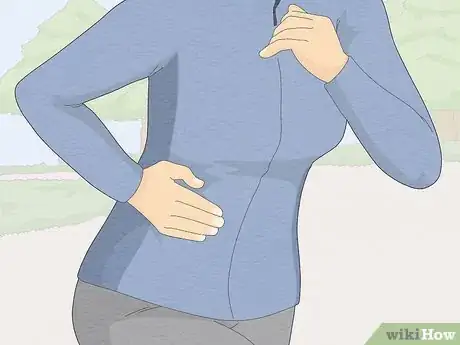



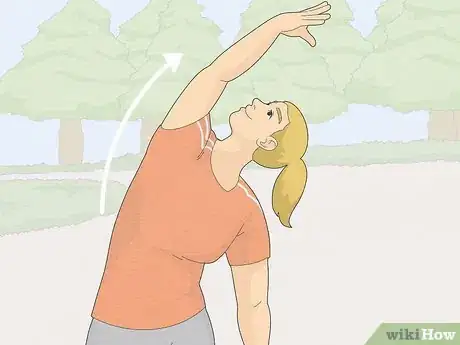





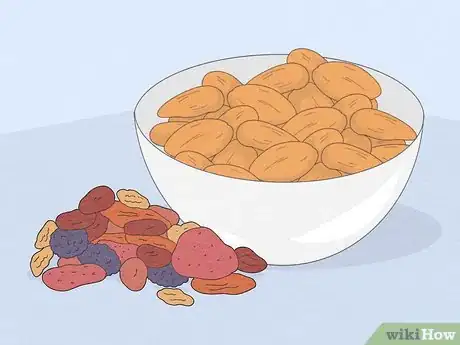

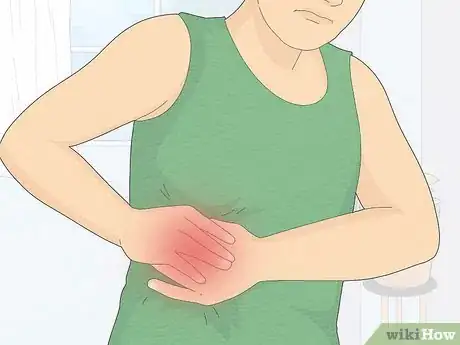



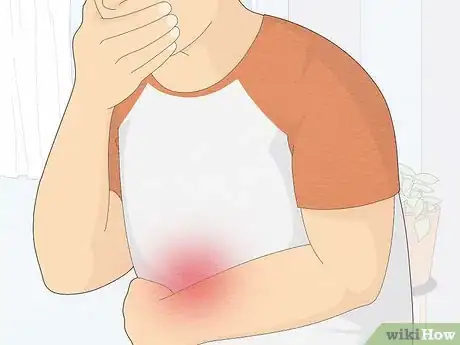
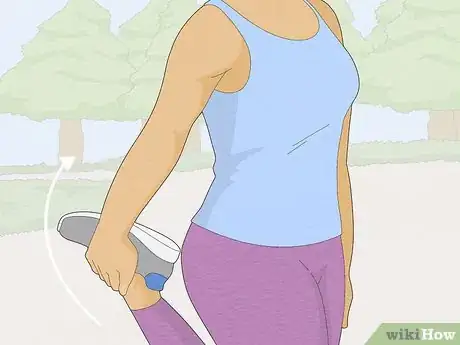

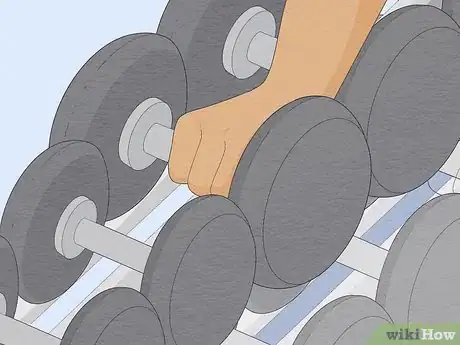

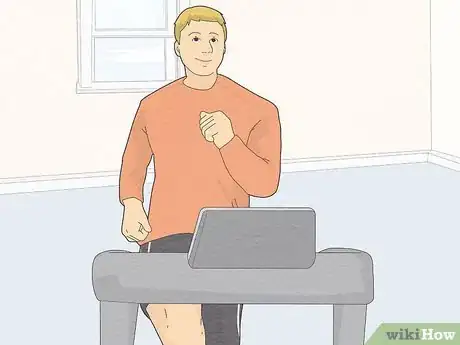
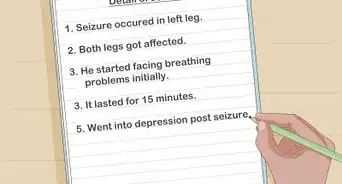
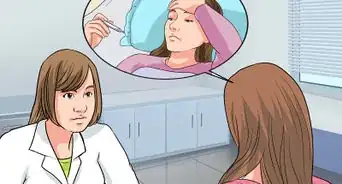
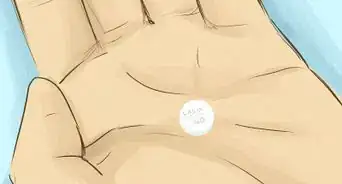
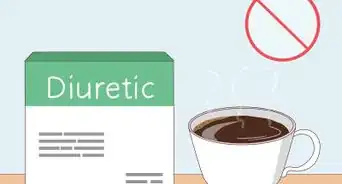
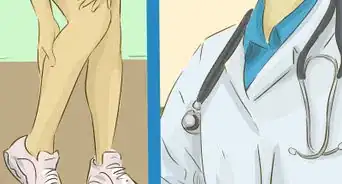
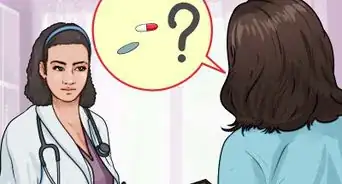
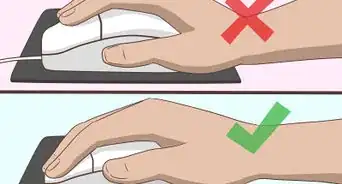
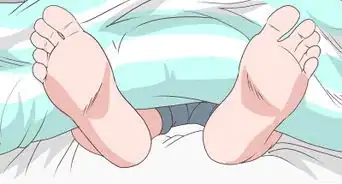
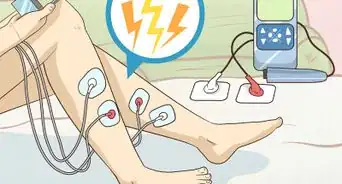
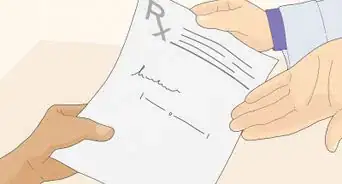









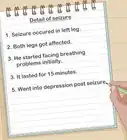

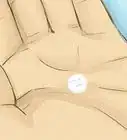
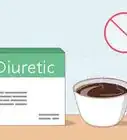



































Medical Disclaimer
The content of this article is not intended to be a substitute for professional medical advice, examination, diagnosis, or treatment. You should always contact your doctor or other qualified healthcare professional before starting, changing, or stopping any kind of health treatment.
Read More...